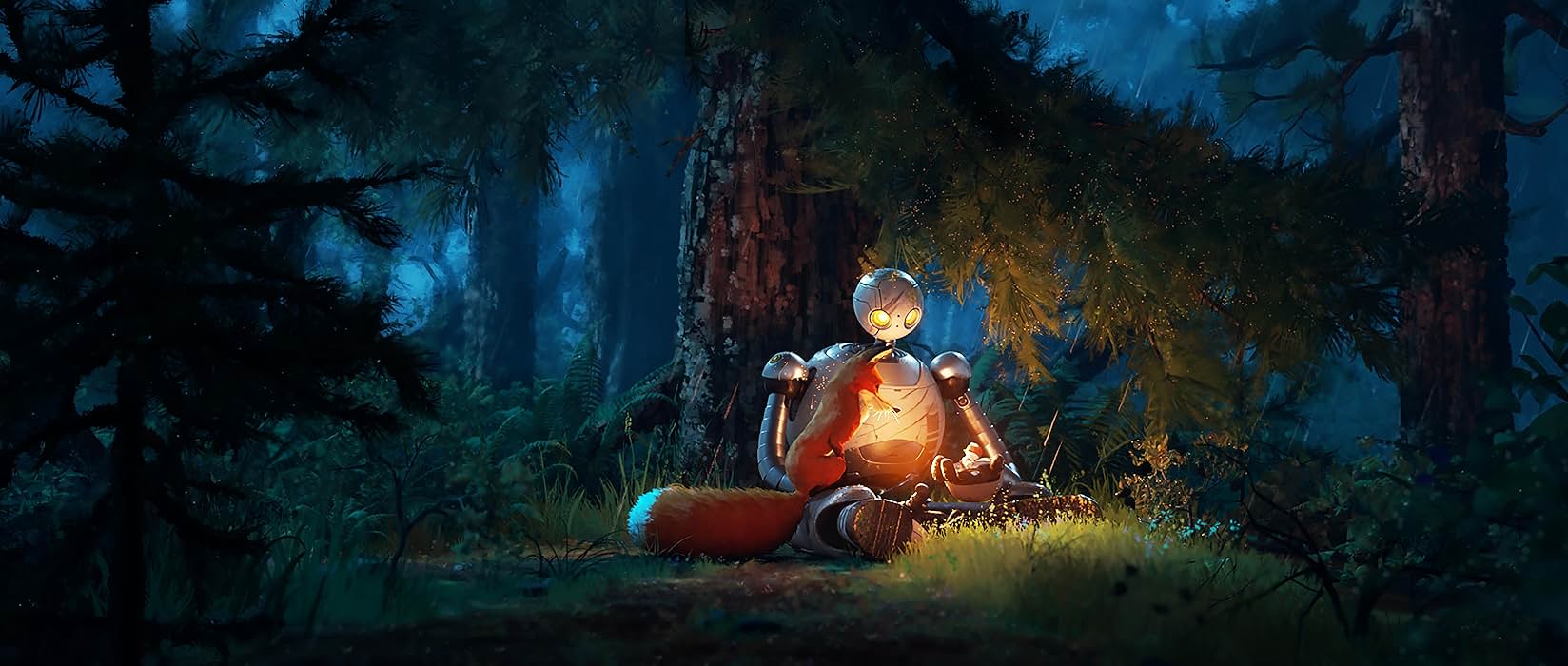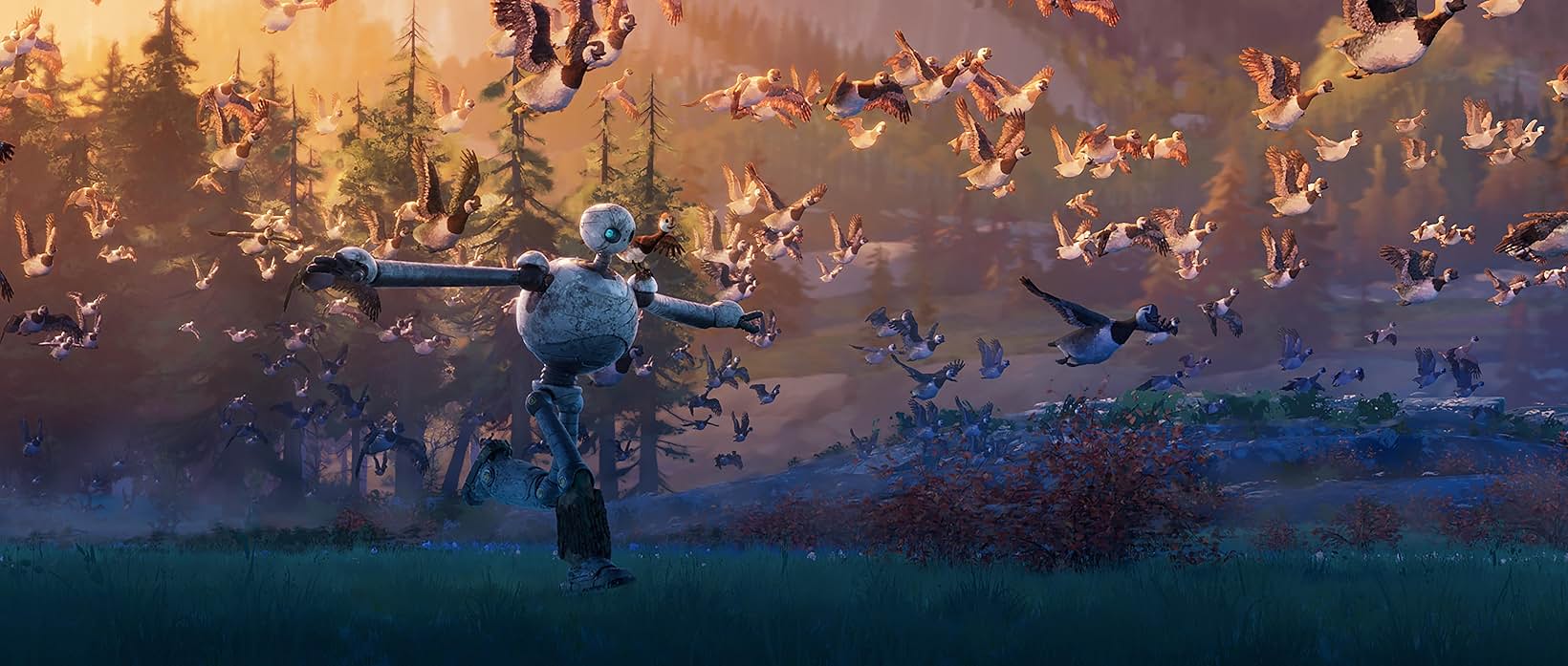The Wild Robot: A New Animated Classic On Found Family

By Kirstie Rodrigues, First Year, English
The Wild Robot (2024) is an emotional and heartfelt depiction of parenthood and community. The director, Chris Sanders (Lilo & Stitch (2002), How to Train Your Dragon (2010)) brings Peter Brown’s The Wild Robot trilogy to life, beautifully presenting our titular character’s journey through motherhood and her search for purpose.
After a typhoon, a cargo ship loses six ROZZUM robots, leaving them on an island vacant of humans. Only ROZZUM Unit 7134 (Lupita Nyong’o) survives the crash. The robot, later nicknamed Roz, attempts to advertise her services (completing every task given to her) to animals on the island but is unsuccessful in finding a role. After crashing into a goose nest, killing all but a single egg, Roz finds herself responsible for raising a gosling (Kit Connor), whom she later names Brightbill, alongside Fink (Pedro Pascal) who realises that he can benefit from Roz’s robotic abilities.
While Roz explored the unfamiliar island, I was immediately awestruck by the hand-painted art style of the movie. The animation style, built on the technologies used in Puss in Boots: The Last Wish (2022), is devoid of the glaring colours and anthropomorphic creatures used in other animated projects. The audience can therefore become fully immersed in the forested setting, as the absence of the commercial tone (often associated with the photorealism style in other animations) allows for a more captivating experience. Both Sanders and production designer Raymond Zibach were inspired by the artwork featured in Brown’s novels and how the lack of over-saturated colours emphasises the innocence and purity of the narrative. Their decision to slowly adopt the painted art style into Roz’s character design reflects her gradual integration into the island community and her becoming a loving mother and friend.

Nyong’o maintains the heart of the movie, the familial connection between Roz and Brightbill, by flawlessly portraying Roz’s transformation from a dutiful robot to a doting mother and is a stand-out amongst this star-studded cast. Roz’s minimalist facial design, which consists of only two camera lenses for eyes and neon lights embellishing her face, may restrict her expressions, but Nyong’o’s vocal performance surpasses the limitations of Roz’s character design. As Roz evolves and interacts with the animals on the island, Nyong’o begins to adopt a more soothing tone, suggesting that she has embraced her maternal role and newfound sympathy.
Pascal also delivers a phenomenal and unrecognisable performance as the quick-witted, pragmatic fox, Fink. Pascal captures Fink’s pessimistic personality perfectly, while also being able to deliver his vulnerable and more authentic moments, such as during the snowstorm scene. Initially portrayed as self-serving and cynical, Fink steps up to help Roz find the animals in need, revealing his hidden sense of responsibility and care, and initiating his transformation from a solitary figure into a key member of his community. He learns, with the audience, that friendship and survival are not mutually exclusive things, when he convinces the animals in the shelter to stop fighting to ensure all of them survive the snowstorm.
Due to Roz’s maternal inexperience, Brightbill is ostracised by the other geese due to his robotic voice acquired from his adoptive mother as well as his unusual upbringing–after all, his mother had murdered his family. Brightbill’s understandable anger causes him to lash out at Roz. This moment of anguish and Roz’s resolve to help her son resonates with both teen and adult audiences. Brightbill is humiliated in front of his peers and becomes angry at his mother, mirroring every teenager’s desire to find their place in the world and the teenage angst that inevitably follows their search for identity. Roz’s perseverance in helping Brightbill fly, despite his reluctance and resentment, echoes parental struggles. The shot of Roz hanging from a precipice and catching Brightbill’s feather is particularly moving as you witness a once unfeeling robot let go of the person they love most.
The Wild Robot has easily secured itself as an animated cinematic classic. From its beautiful artwork, masterful voice acting and heartfelt narrative, Sanders has created a film that is enjoyable for all ages. Brightbill’s struggle to belong and find community can resonate with those navigating their own identities while reflecting the universal feelings of isolation and desire for acceptance. Roz’s journey through motherhood mirrors the stress and triumphs of parenthood, and her initial uncertainty and perseverance reflect the notion that love is often accompanied by challenges. It is a timeless tale that beautifully illustrates the power of love and belonging, making it a must-see for families and animation enthusiasts alike.
What did you think of The Wild Robot?
